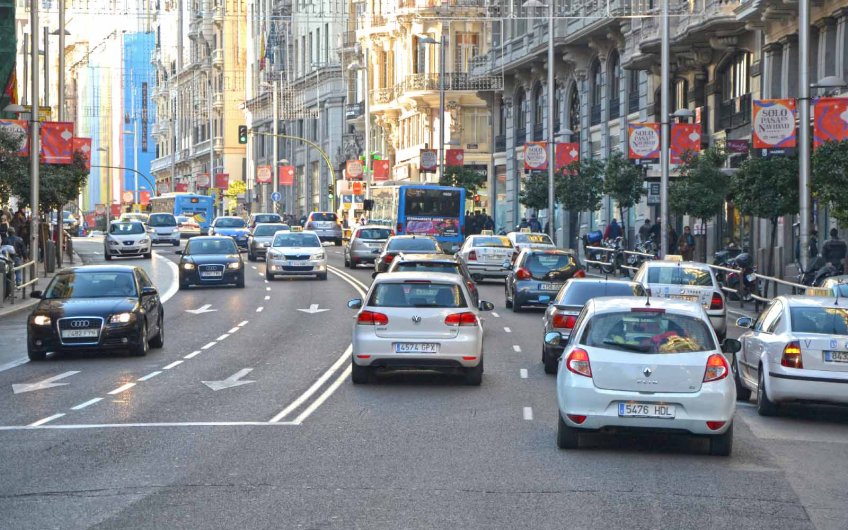
The tips for driving in Madrid we list below will help you to travel around the city better and as the saying goes: “If you can drive in the centre of Madrid, you can drive anywhere”. More than three million cars travel on the streets of Madrid every day, meaning that Madrid has some of the heaviest traffic in Europe. This makes driving in Madrid at certain times a real test of patience and determination.
If driving around the Spanish capital is a stressful and chaotic experience for you due to the busy roads, then we’re going to give you a hand. We have some tips for you below.
If you’re not used to driving in Madrid, you’re going to come up against restricted access areas you don’t know about, closed roads, and one-way streets. The best way to avoid these situations is by using sat nav, which will make your journey easier and simpler. Plan your route and don’t try to figure it out as you go or rely on the city’s street signs alone.
If you’re going to visit Madrid, then try and avoid, as much as you can, driving at certain times of the day. Traffic is particularly heavy from 7am to 9am, from 6pm onwards in the afternoon and from 3pm onwards on Fridays.
Madrid is committed to reducing pollution through various protocols that we should always keep an eye on.
These protocols can restrict vehicle access to set areas, as well as introduce speed limits on the various roads into the capital and the city streets.
We have to pay the utmost attention to the road to be able to anticipate any possible problems: noticing in time if a pedestrian is about to cross, if a vehicle is jumping the lights or changing lane without indicating and so on. To avoid scares behind the wheel it is important to be aware of everything happening around you so that you can anticipate what will happen and react appropriately.
Lower the risk of accidents and fines by driving at the speed limit for the road you’re using. The speed limit is 50kph on most streets and in areas such as the tunnels in the centre of the M30 it rises to 70kph. Even so, be aware of where you’re driving and keep a safe distance from other vehicles in line with your speed. Doing this will prevent unnecessary braking and avoid possible crashes.
The streets are there to be used by everyone and we shouldn’t take them over for ourselves. Campaigns to increase cycling, skating, and motorbike use are growing in Madrid. This is something to be aware of when driving. Bikes and motorbikes usually weave in and out of traffic, which can be risky if we decide to turn or change lane without paying enough attention to our surroundings. We must also be careful with pedestrians. There are some places where visibility at pedestrian crossings is limited by parked cars. Be very careful at these points and try to anticipate any dangers.
If you don’t want to get even more stressed out, then pay attention to the traffic lights. Drivers behind you will honk their horns at you if you’re not sharp when the light changes from red to green.
And if you don’t want a nasty surprise, you should be careful with amber lights. It’s better to stop and avoid being caught on one of the numerous cameras. We don’t want fines after all, do we?
The Regulated Parking Service oversees vehicle parking. There are two types of zones:
There are many factors to take into consideration when driving on the streets of Madrid. This is a large-scale and constantly evolving setting which we must face calmly and reasonably. If you follow these tips and instructions we are sure that your stress levels will be greatly reduced and you’ll become a better driver on the streets of the capital.